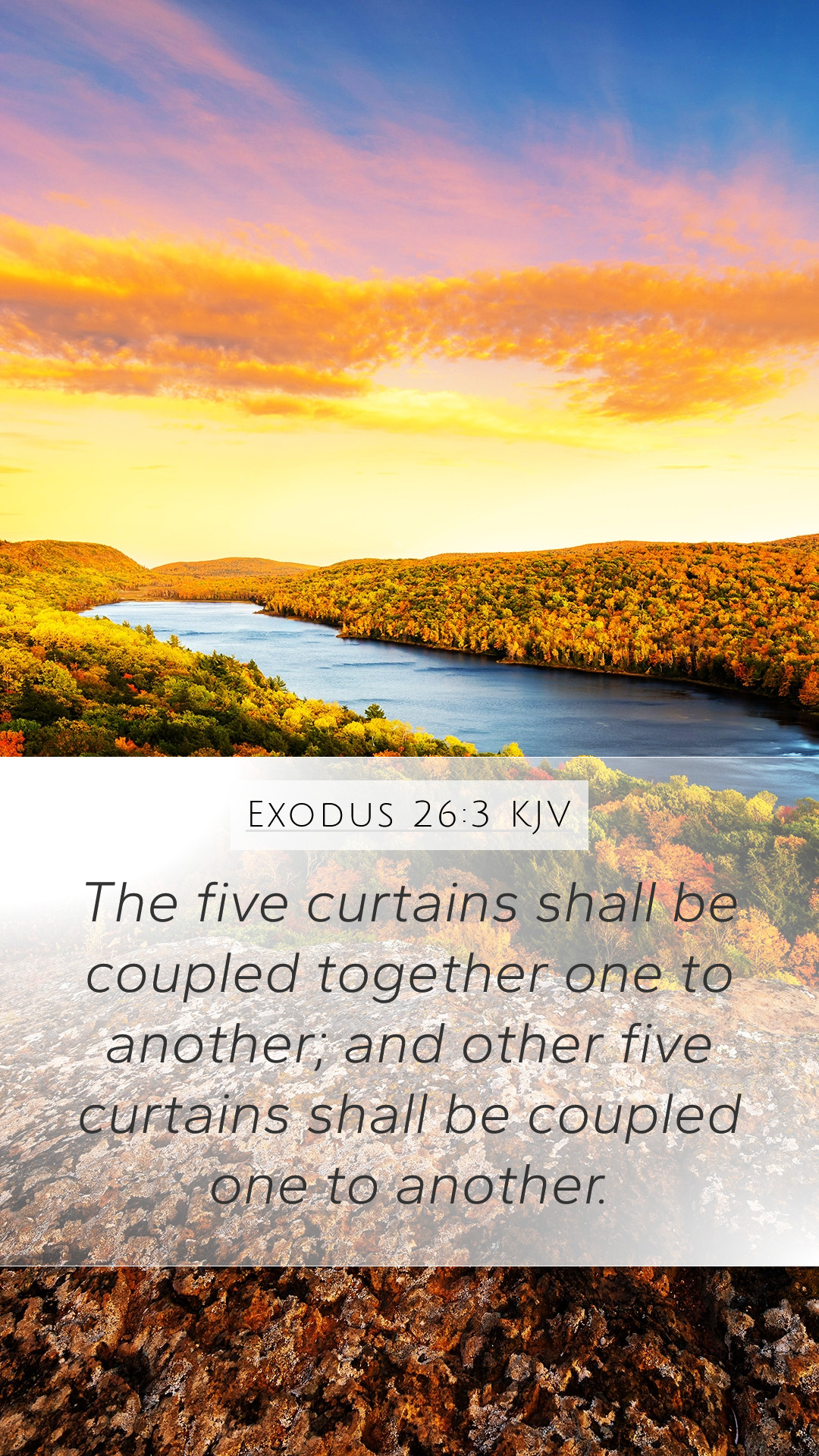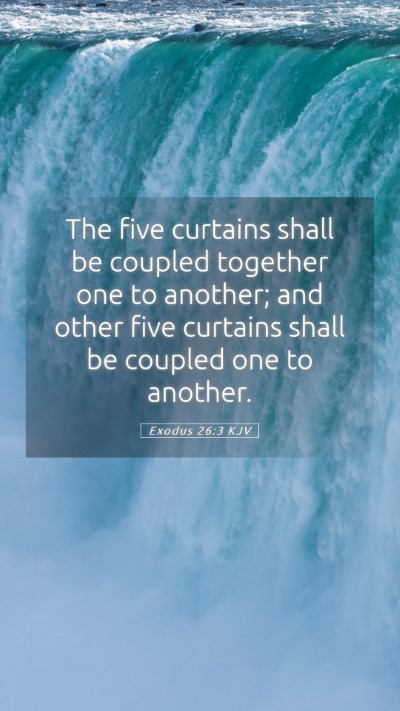Understanding Exodus 26:3
In this analysis of Exodus 26:3, we will explore the meaning, interpretations, and significance of this scripture through insights drawn from esteemed public domain commentaries by Matthew Henry, Albert Barnes, and Adam Clarke. This verse is part of the detailed instructions God gave to Moses regarding the construction of the Tabernacle, a sacred space that served as a dwelling place for God's presence among the Israelites.
Verse Text
“And five curtains shall be made of fine twined linen, and blue, and purple, and scarlet: with cherubims of cunning work shall the curtains be made.” - Exodus 26:3
Contextual Background
The Book of Exodus outlines the story of Israel's slavery in Egypt and their subsequent liberation. Within this narrative, God provides detailed plans for building the Tabernacle shortly after delivering the Israelites. The construction of the Tabernacle symbolizes God's desire to dwell among His people.
Verse Explanation
The mention of "five curtains" signifies structure and organization in worship. Each aspect of these curtains, from their materials to their colors and designs, holds profound significance:
-
Fine Twined Linen: Represents purity and righteousness. According to Matthew Henry's Commentary, the use of linen symbolizes the holiness required in presenting offerings to God.
-
Colors of Blue, Purple, and Scarlet: These colors are rich in symbolism. Blue often represents heaven and divine revelation, purple denotes royalty or kingship, and scarlet can symbolize sacrifice. Albert Barnes emphasizes that the colors indicate the majesty of God and the sacrificial aspect of the worship that occurs within the Tabernacle.
-
Cherubims of Cunning Work: The intricate designs represent the heavenly beings that serve God, as highlighted in Adam Clarke's Commentary. The presence of cherubim indicates protection and the majesty of God, suggesting that worship happens in the presence of divine beings.
Purpose of the Curtains
The curtains served both aesthetic and functional purposes:
- They were a tapestry that created a barrier separating the holy from the common, reminding the Israelites of the holiness of God.
- They provided practical shelter and beauty to the temporary dwelling of God’s presence.
- Together, they communicated the importance of approaching God with reverence and awareness of His holiness.
Theological Implications
This passage is also layered with theological implications:
- God's Desire for Relationship: The Tabernacle's very design illustrates God's intention to dwell among His people, which is echoed in John 1:14, "And the Word became flesh and dwelt among us."
- The Symbol of Christ: The curtain and its colors can be paralleled to Christ's ministry, where He fulfills the requirements of righteousness, royalty, and sacrifice.
Cross References
Several other scripture passages relate effectively to Exodus 26:3:
- Hebrews 9:1-5: Discusses the elements of the Tabernacle and its purpose in the context of New Testament worship.
- Exodus 25:10-22: Provides additional context on the materials and dimensions of the Ark and the mercy seat.
- 1 Chronicles 28:11-12: Shows King David's plans for the temple, echoing the detailed instructions God gave in Exodus.
Application and Relevance
Understanding the significance of Exodus 26:3 can greatly enhance one’s Bible study. Here are some insightful applications:
- For believers today, recognizing the holiness of God and the preparation required in coming before Him fosters a deeper sense of respect and reverence in worship.
- Reflecting on how these Old Testament components point to Christ encourages a holistic understanding of the Bible as one continuous narrative of redemption.
- Studying the particulars of God’s instructions helps cultivate a heart of appreciation for God’s desire to commune with humanity.
Conclusion
Exodus 26:3 offers profound insights into the nature of God, the significance of worship, and the preparation involved in meeting with the Divine. By recognizing the detailed instructions for the Tabernacle, believers can appreciate how these elements reflect a transcendent truth about God's relationship with His people throughout history.
Further Study Avenues
For those interested in delving deeper into understanding scripture and Bible study topics related to this verse, consider exploring:
- Online Bible study tools that offer commentary and analysis.
- Engaging in Bible study lessons that focus on Old Testament symbolism.
- Joining Bible study groups that facilitate discussions on the relevance of the Tabernacle in understanding God’s nature.


